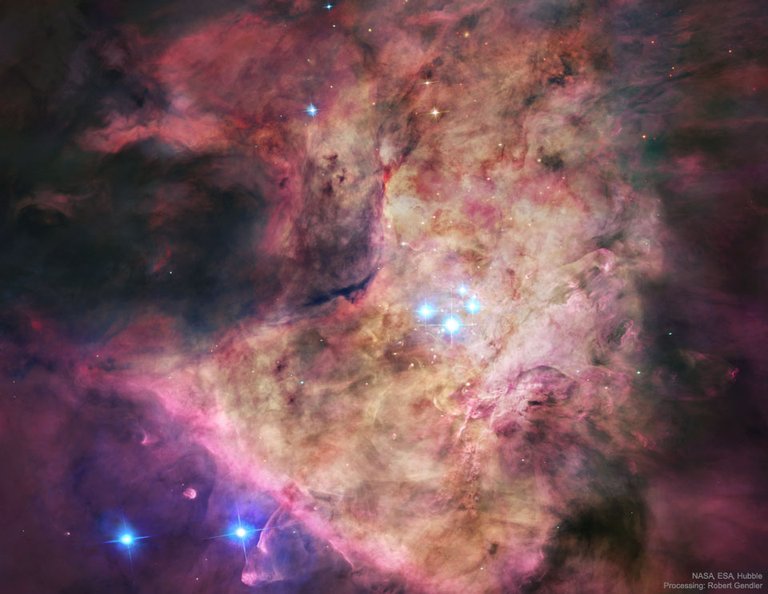🌌 SpacePicture of a Day: Trapezium: In the Heart of Orion 🪐

What lies in the heart of Orion? Trapezium: four bright stars, that can be found near the center of this sharp cosmic portrait. Gathered within a region about 1.5 light-years in radius, these stars dominate the core of the dense Orion Nebula Star Cluster. Ultraviolet ionizing radiation from the Trapezium stars, mostly from the brightest star Theta-1 Orionis C powers the complex star forming region's entire visible glow. About three million years old, the Orion Nebula Cluster was even more compact in its younger years and a dynamical study indicates that runaway stellar collisions at an earlier age may have formed a black hole with more than 100 times the mass of the Sun. The presence of a black hole within the cluster could explain the observed high velocities of the Trapezium stars. The Orion Nebula's distance of some 1,500 light-years make it one of the closest candidate black holes to Earth.
HD image: LINK 🛸
Copyright: No copyright 🔭
Project Website: LINK 🚀
| Name | Craft |
|---|---|
| Oleg Kononenko | ISS |
| Nikolai Chub | ISS |
| Tracy Caldwell Dyson | ISS |
| Matthew Dominick | ISS |
| Michael Barratt | ISS |
| Jeanette Epps | ISS |
| Alexander Grebenkin | ISS |
| Butch Wilmore | ISS |
| Sunita Williams | ISS |
| Li Guangsu | Tiangong |
| Li Cong | Tiangong |
| Ye Guangfu | Tiangong |